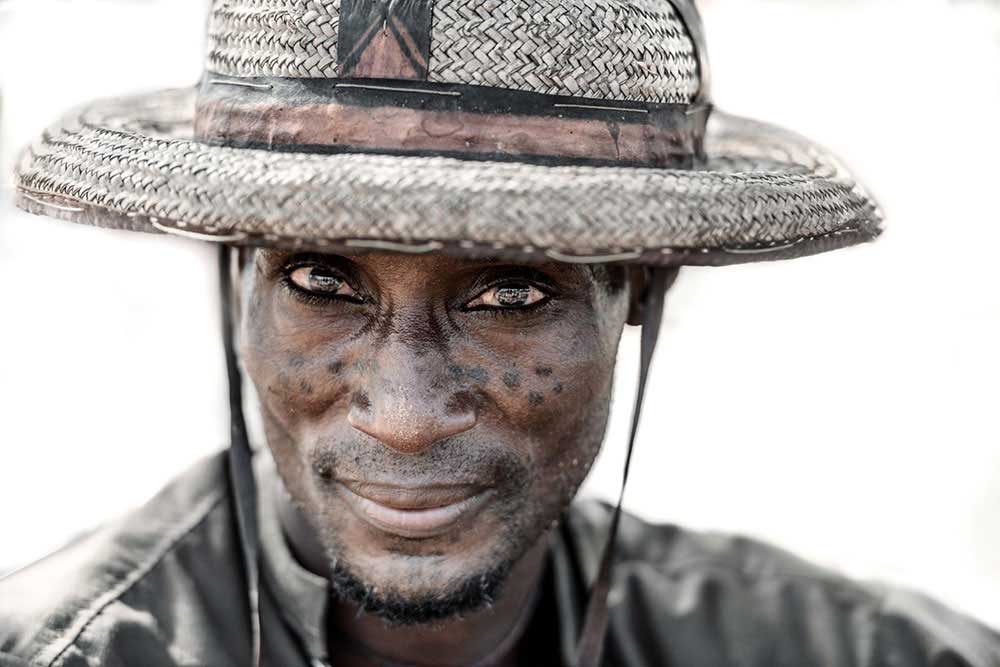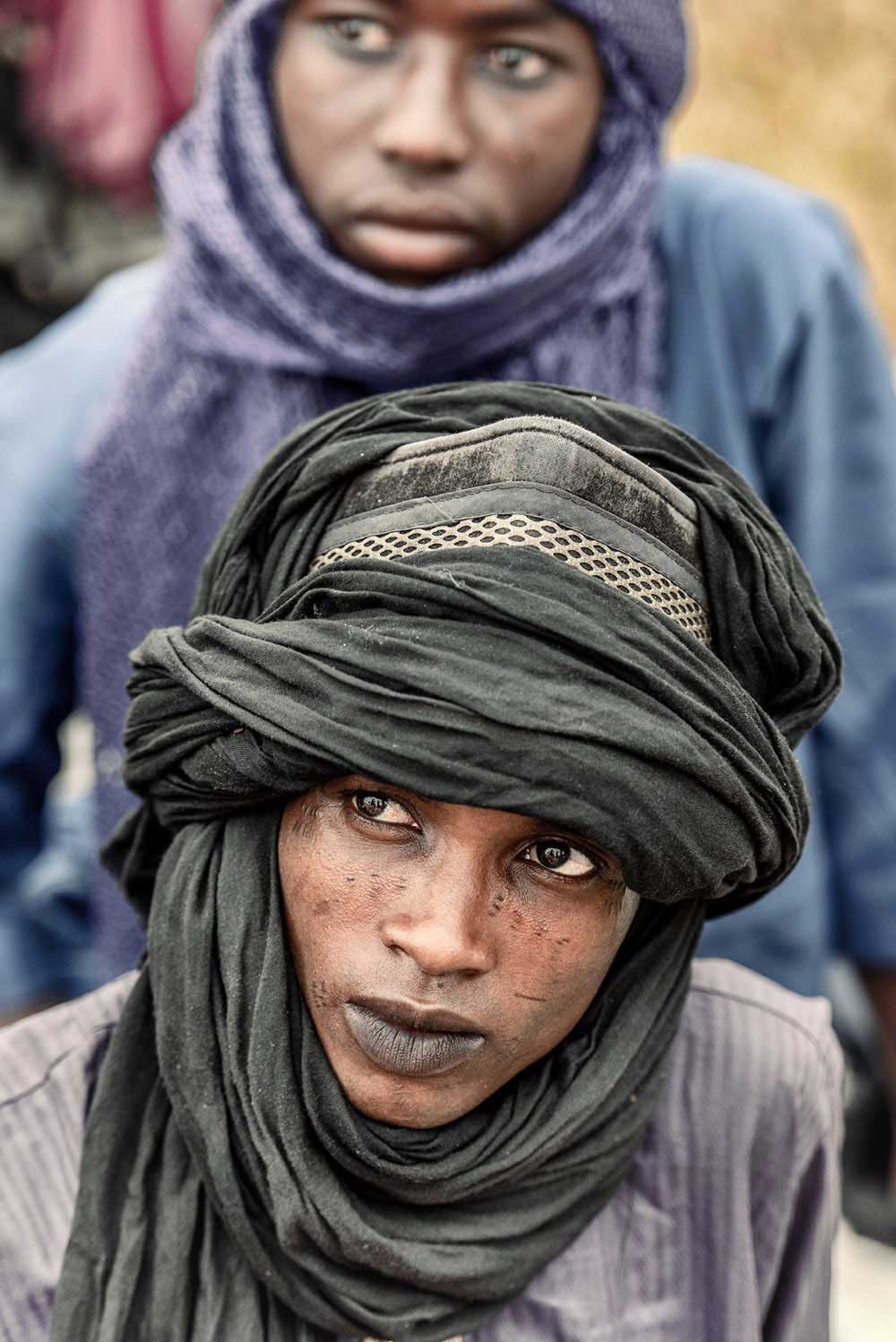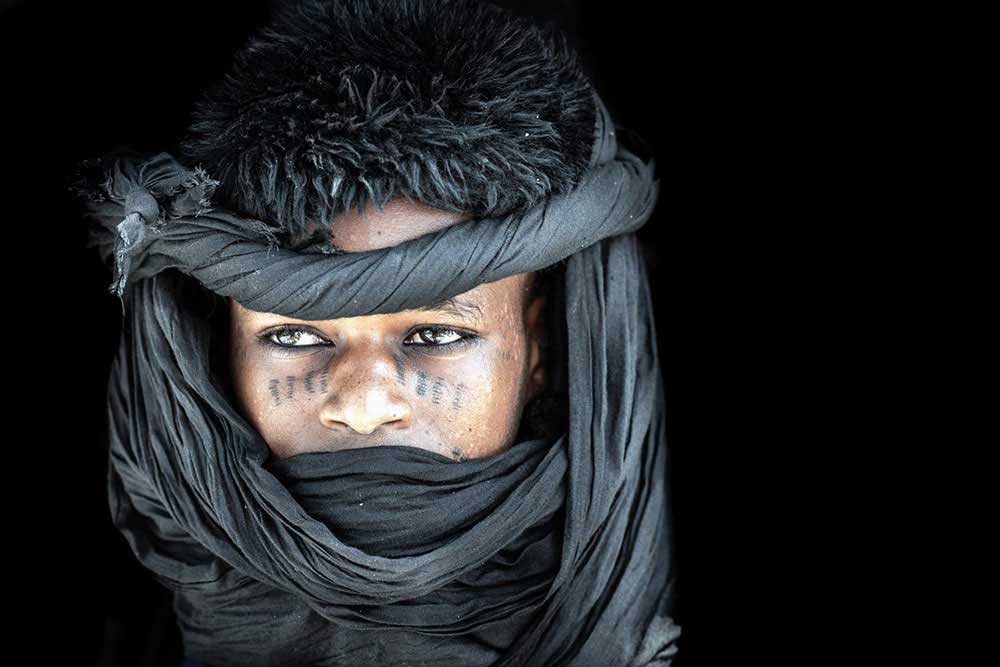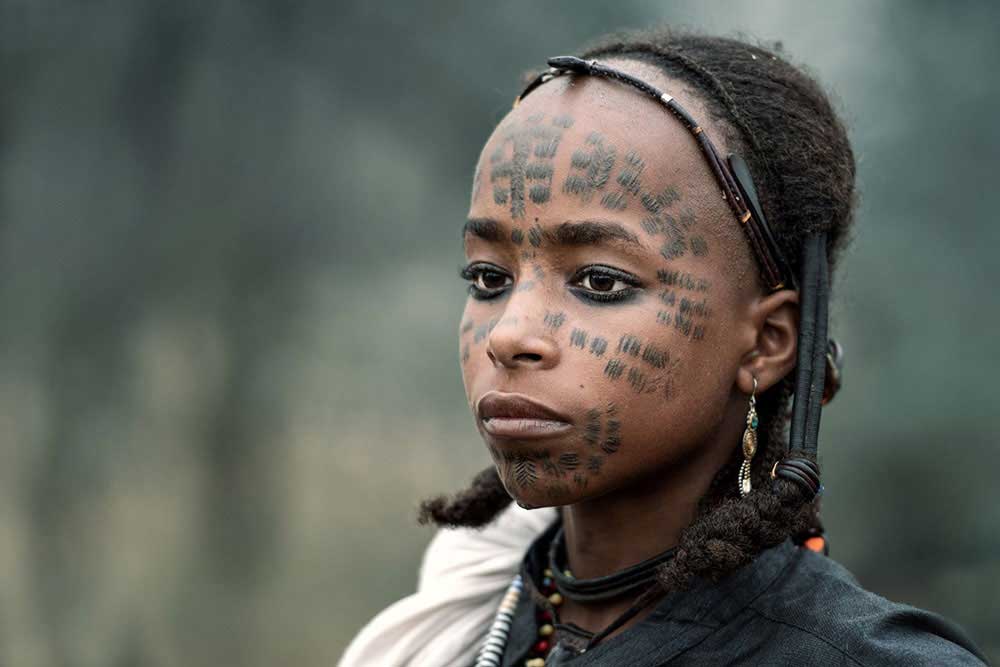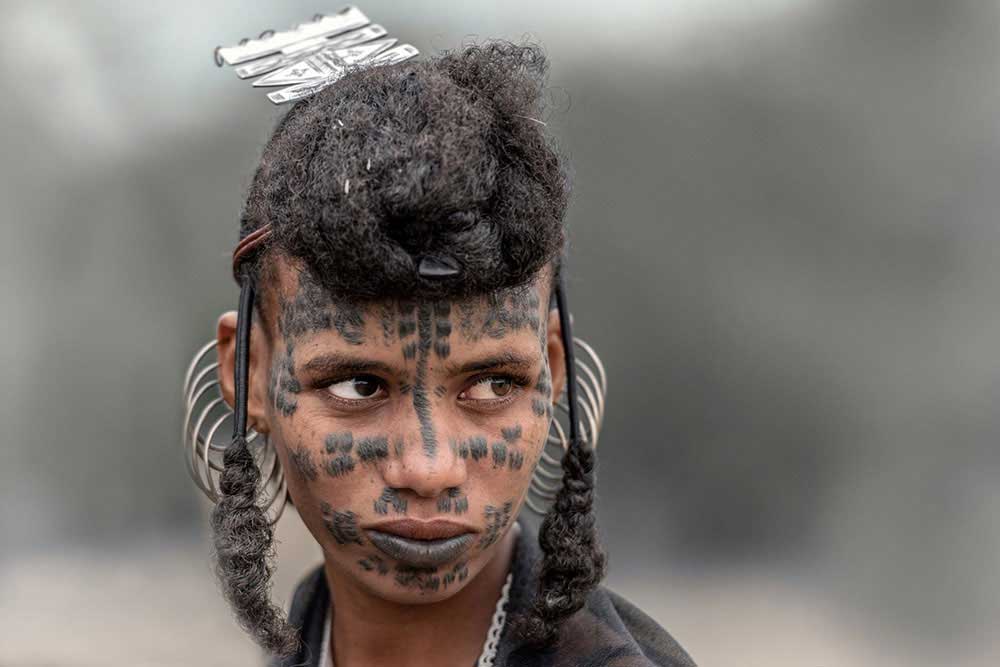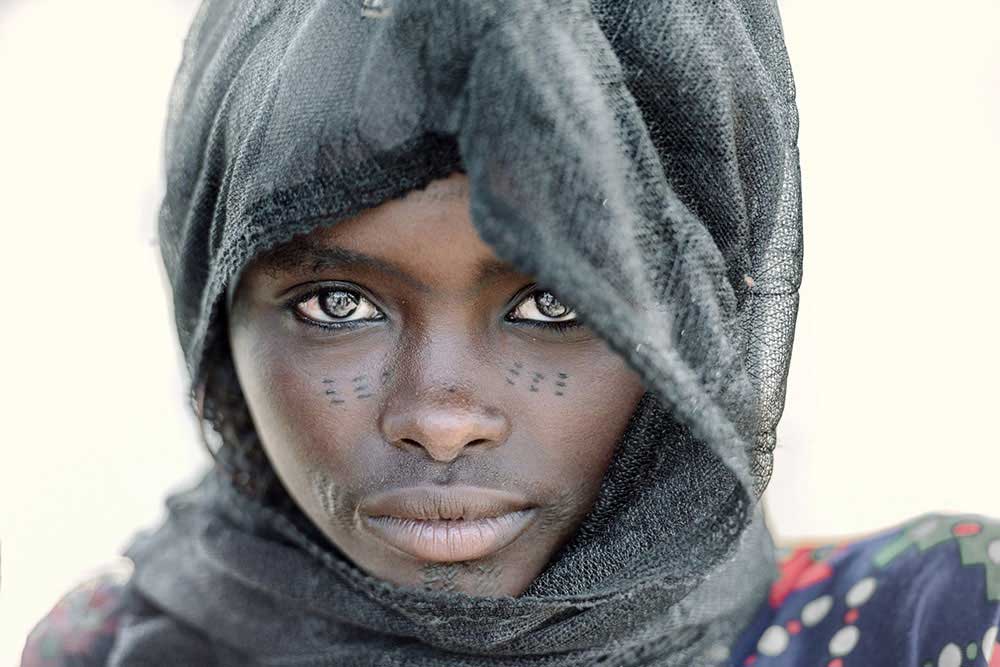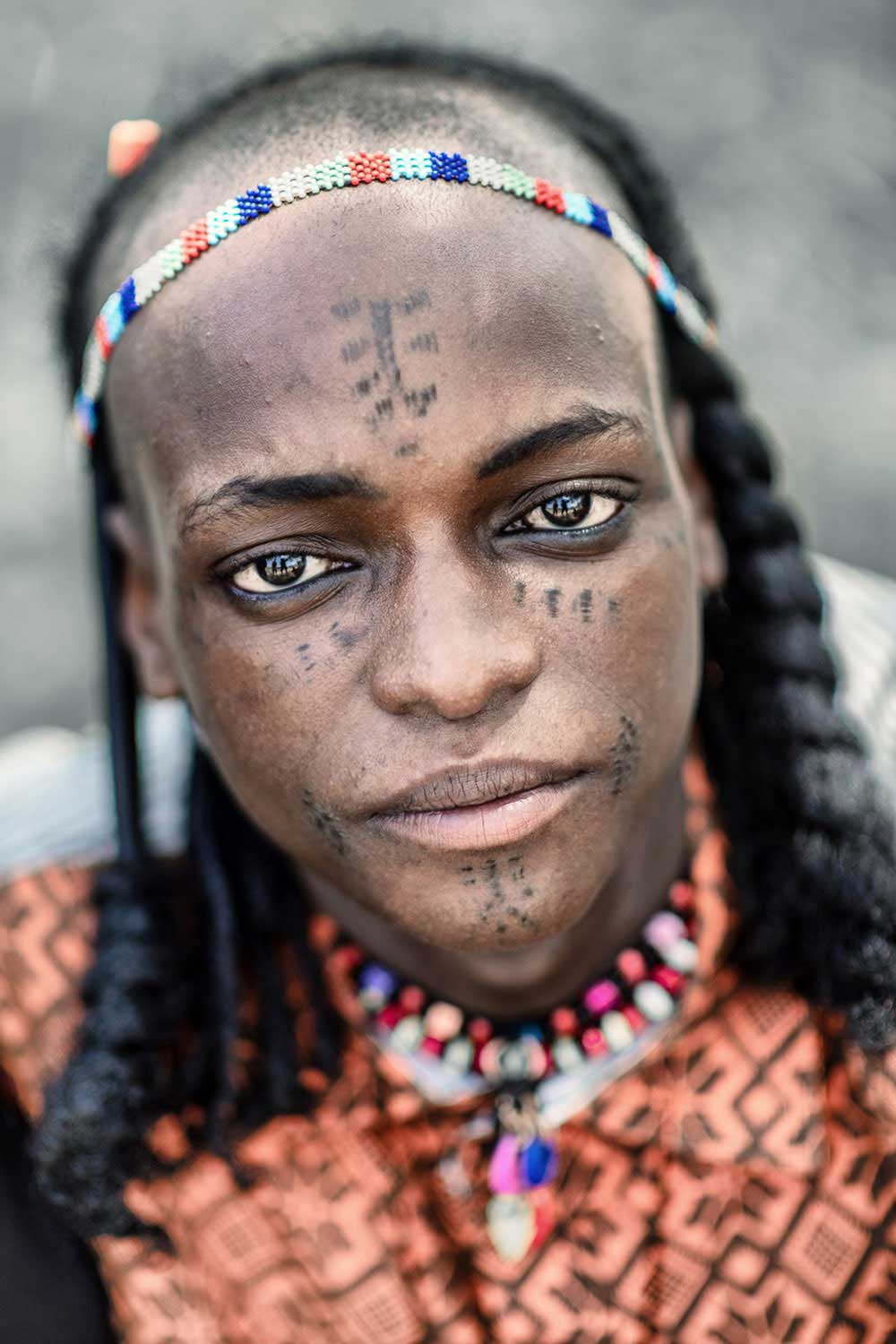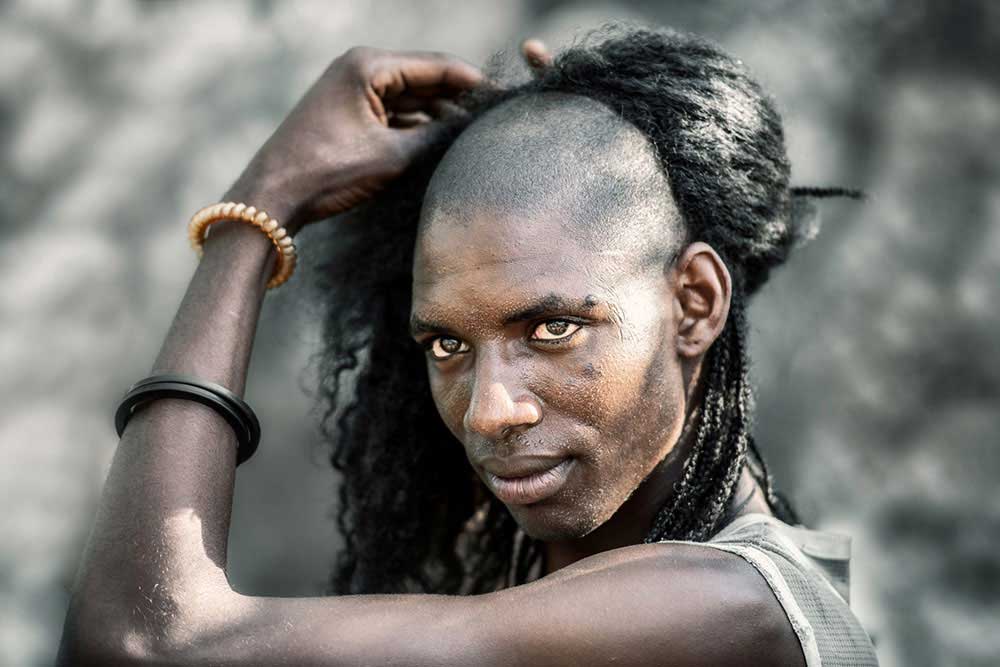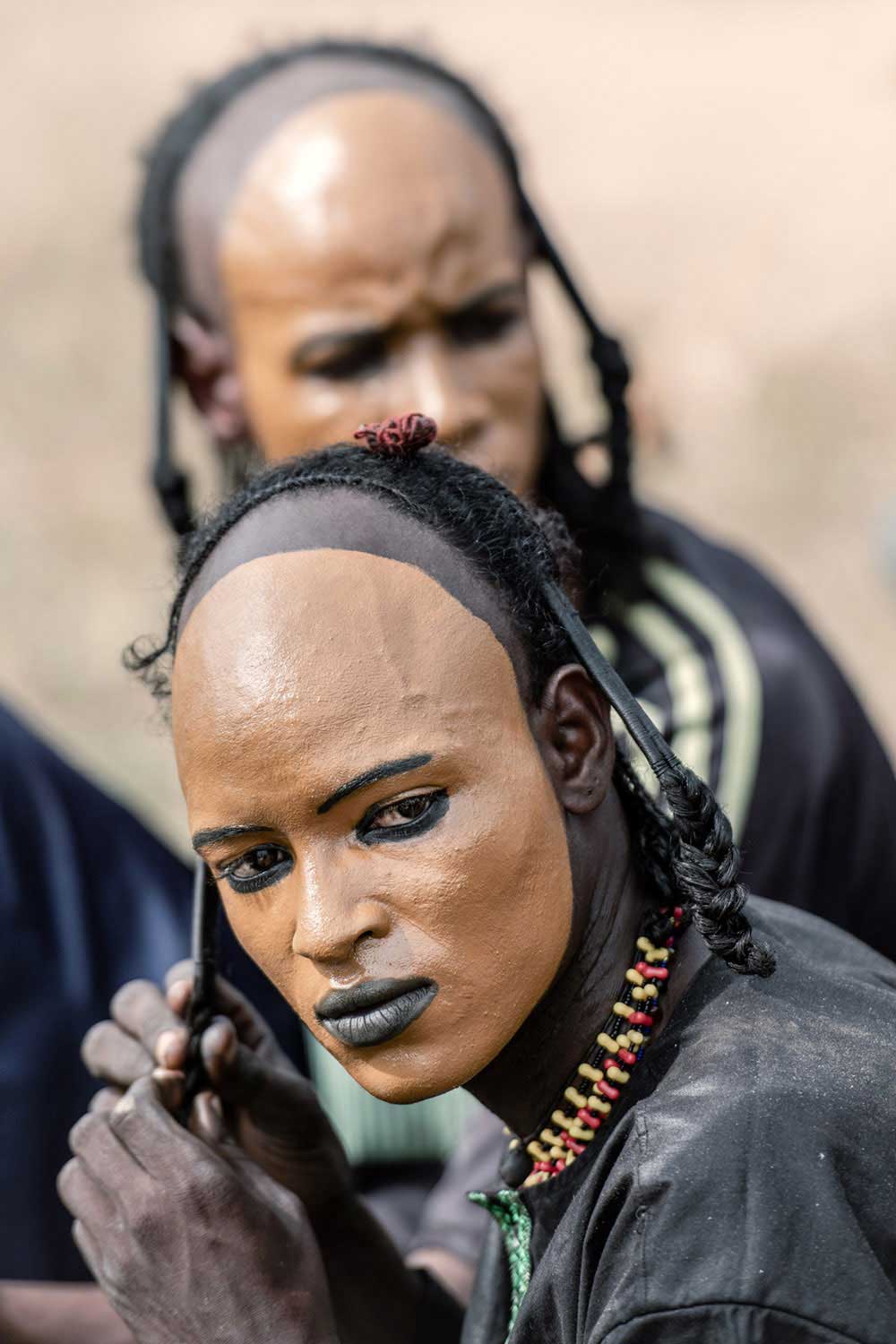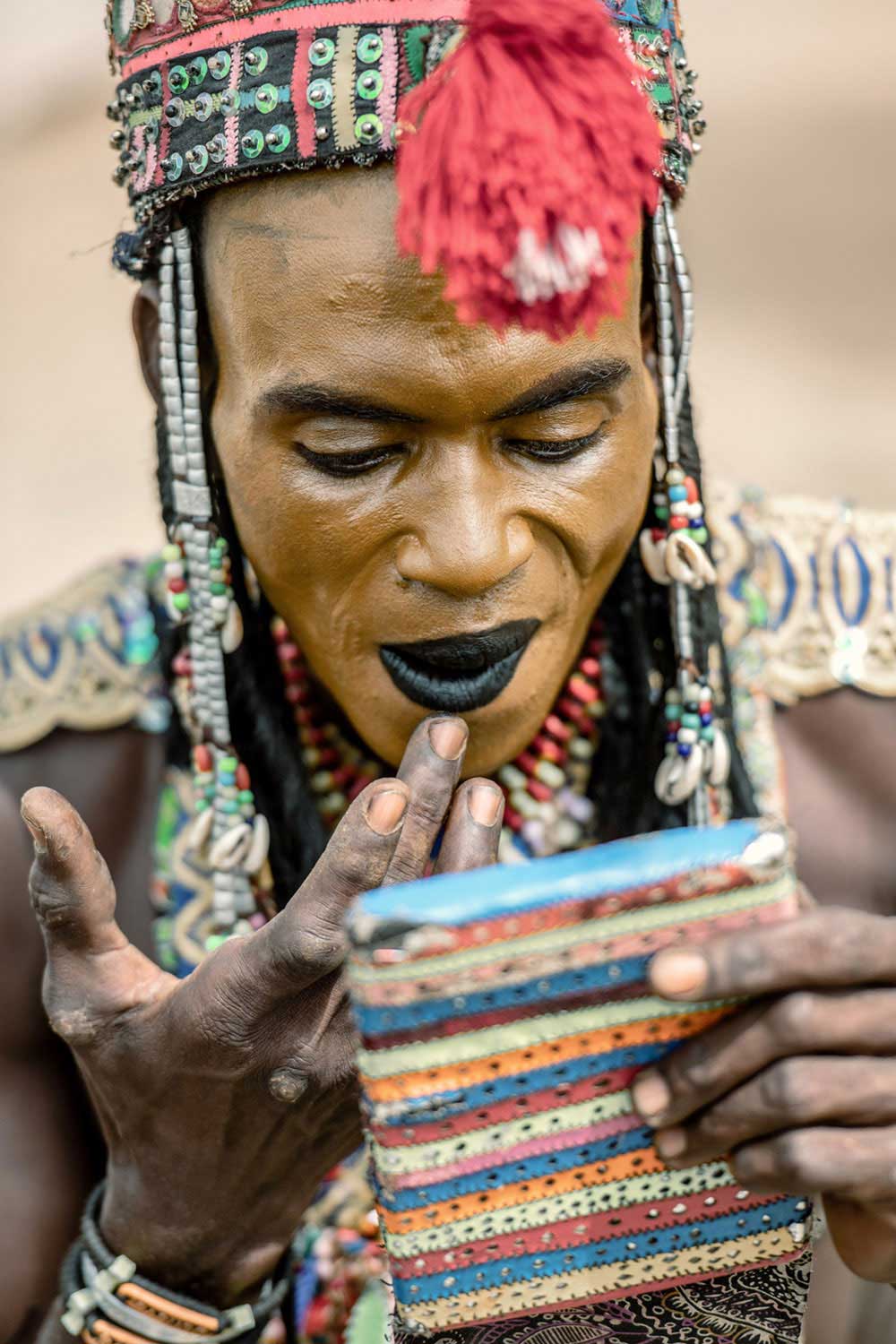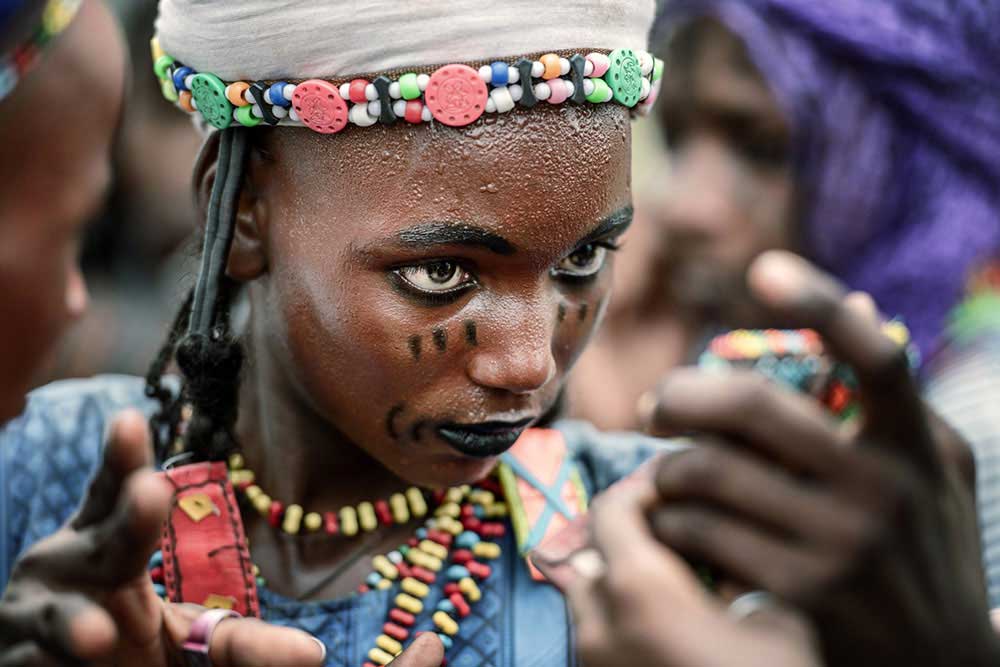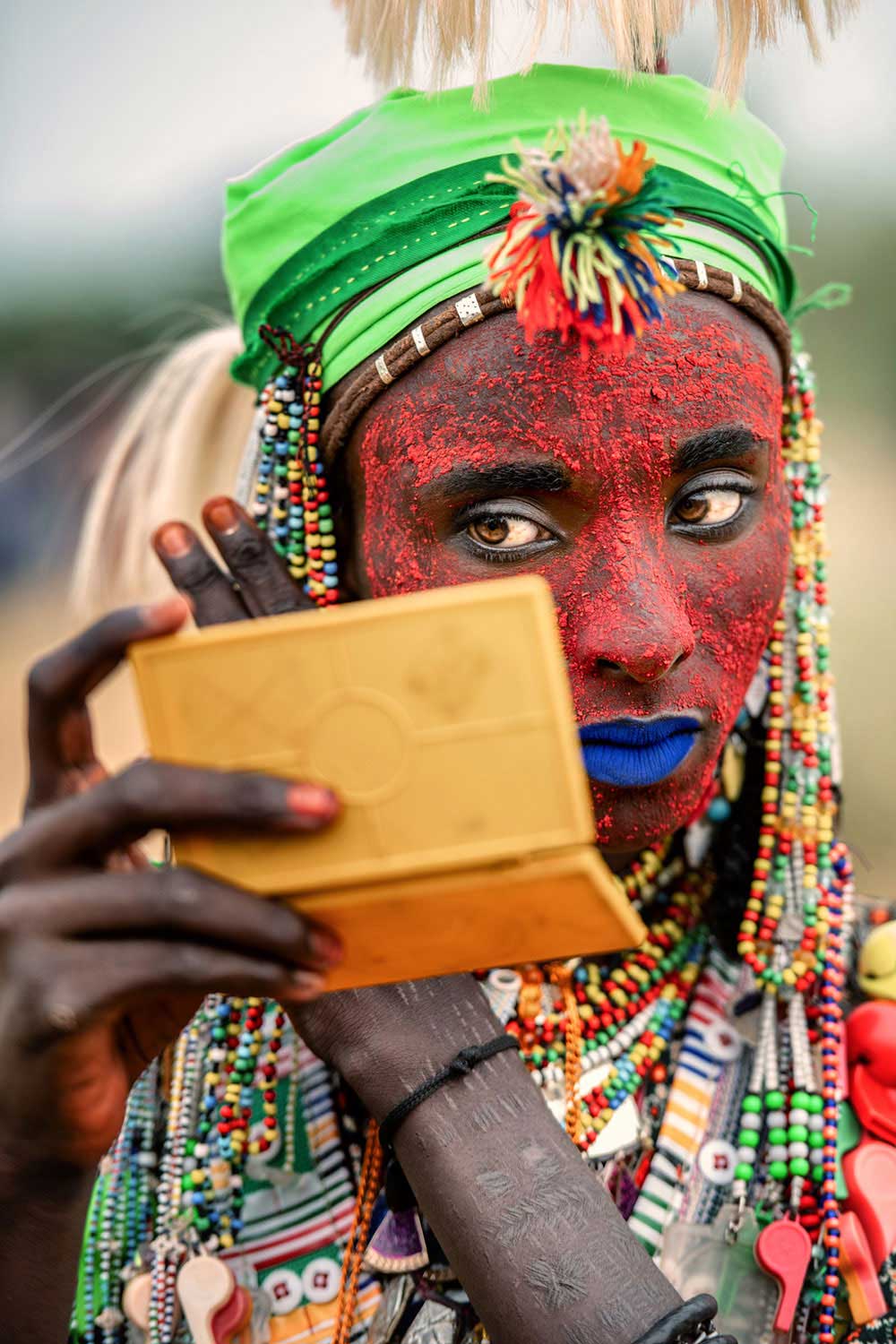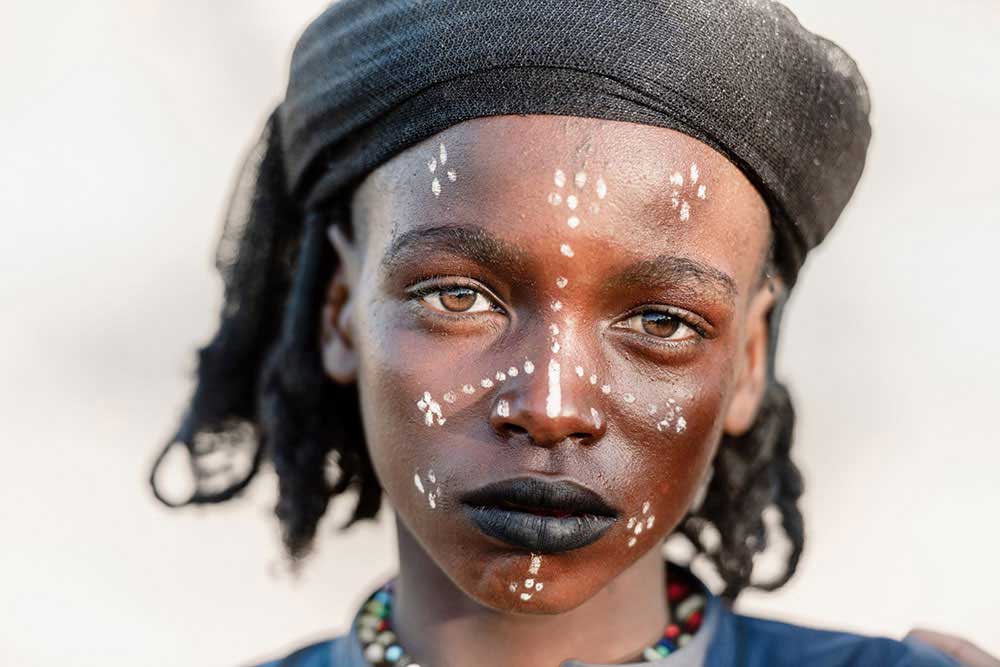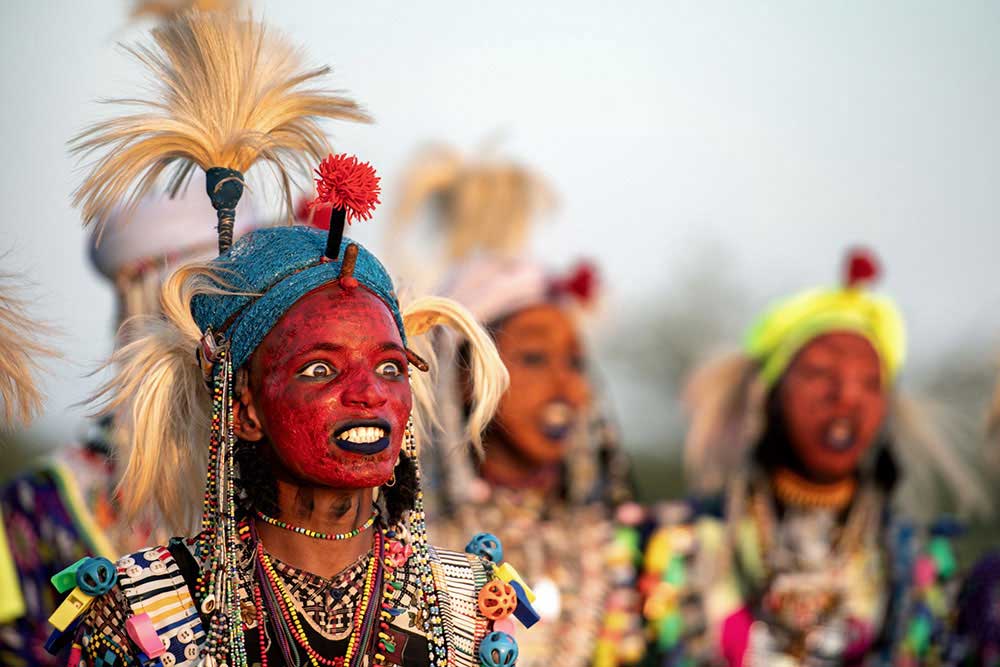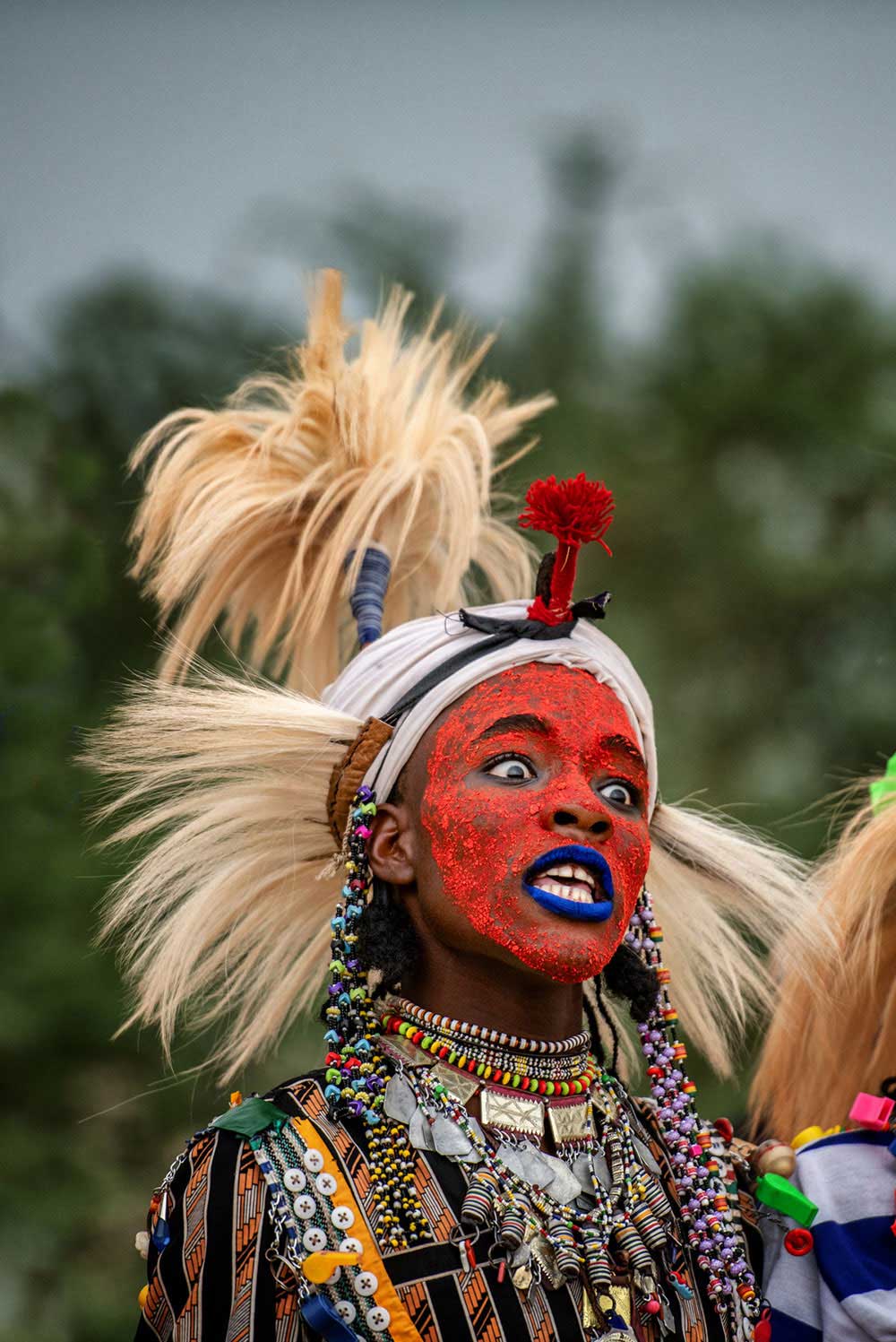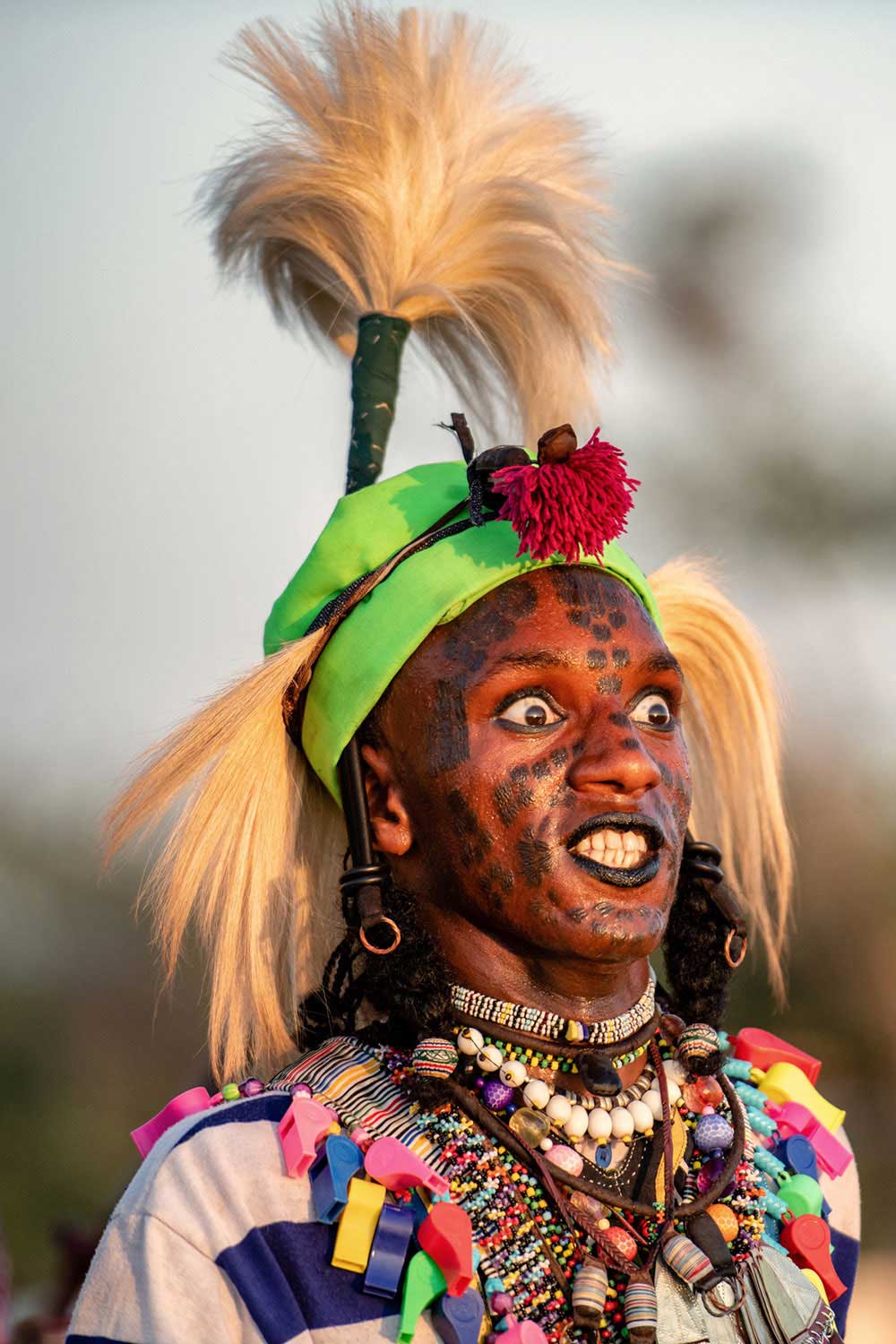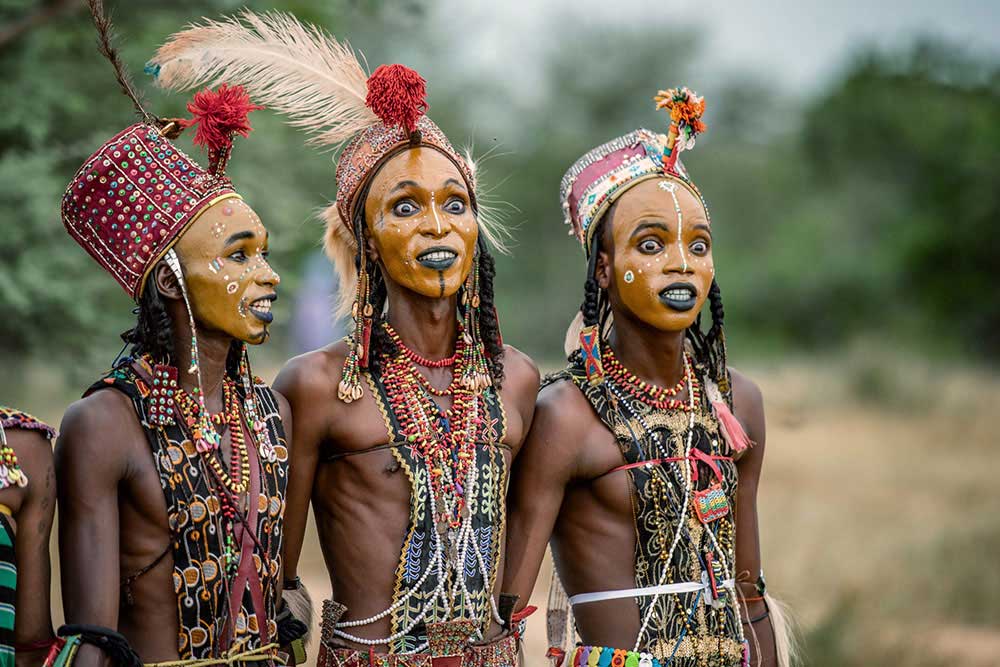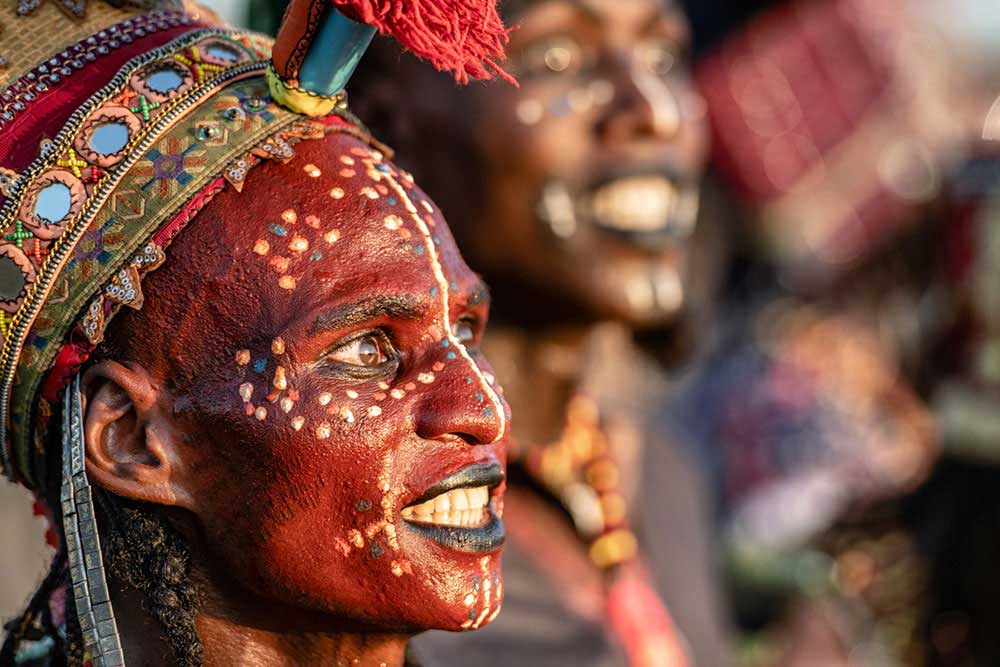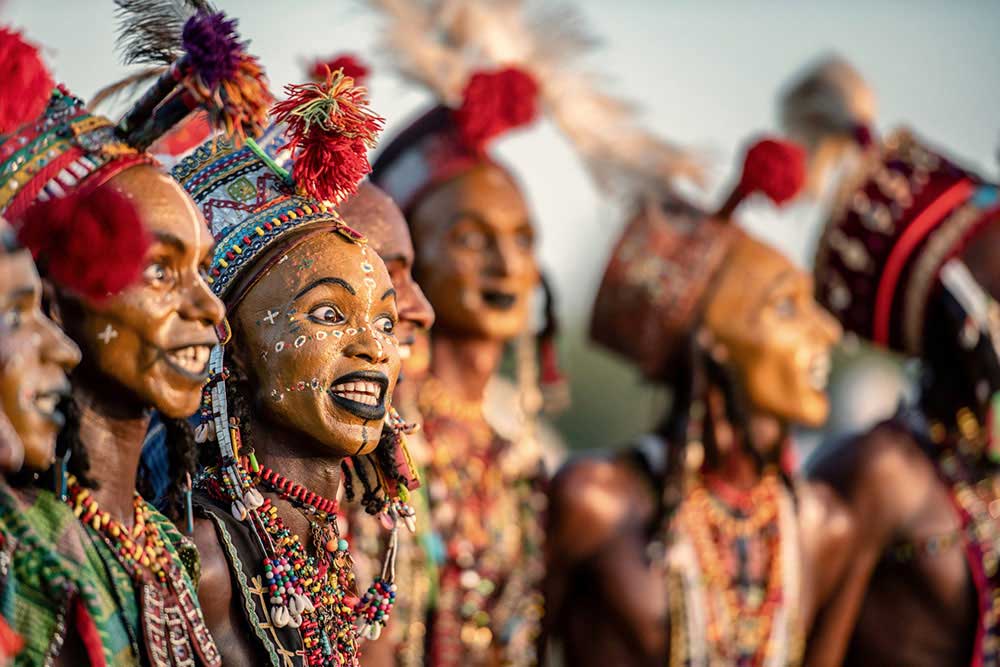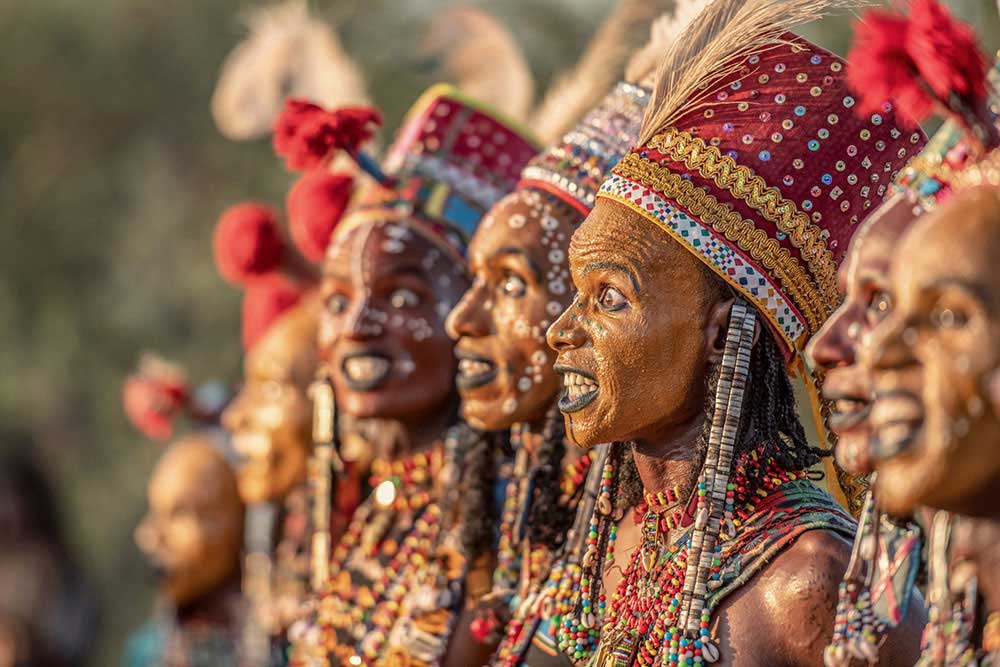Gerewol – The Wodaabe tribe (Mbororo) a branch of the Fulani tribe are nomadic pastoralists who are found predominantly in Niger and Chad, in the Sahel region of Sub Saharan Africa. They speak Fula which isn’t a written language.
The Wodaabe mostly live on milk and ground millet, as well as yogurt, sweet tea and occasionally the meat of a goat or sheep.The code of behavior of the Wodaabe emphasizes reserve and modesty (semteende), patience and fortitude (munyal), care and forethought (hakkilo), and loyalty (amana). They also place great emphasis on beauty and charm.
Once a year these nomads come together in a festival known as the Gerewol. This is a beauty pageant for the men so that they might be selected by the women if the tribe. The women are usually younger and the men are seen as fair game in a society which is polygamous and polygynous. The men adorn themselves using a diversity of facial paint colours and the whites of the eye and teeth colour are particularly important. So too their outfits which are embellished with beads, buttons and baubles in the brightest of colours. Mirrored tunics and hats add to the exuberance and adornment. The overall appearance with the paint, makeup and outfits can only be described as feminine from our cultural perspective.
They dance like male peacocks or other such birds who exhibit their plumage to attract to attract females. The male beauty ideal of the Wodaabe stresses tallness, white eyes and teeth; the men will often roll their eyes and show their teeth to emphasize these characteristics. They are animists at heart and this may be why they emulate the animal kingdom. They have now, in a token way, been converted to Islam.
I came for a week to Chad to watch the Gerewol festival, the location of which is not decided upon until the last minute but it’s is always held at the end of the rainy season in the Sahelian zone which has seasonal rainfall and the grass that grows is an imperative for the long horned red Fulani cattle. The Wodaabe move frequently in search of fresh pasture for their animals. They use donkeys and bulls to transport their Suudu (houses).
At this festival there were two groups of Wodaabe, the Sudosukai and Japta. They are both scarred facially and on their bodies using razor blades and ash is then rubbed into the open wound. The result is a black tattoo which is slightly keloidal (raised). This scarification starts with very young children and tattoos are added with time. The Japto are more heavily scarred than the Sudosukai. There are perhaps some physiological difference too with the Sudosukai being finer. Many have model like features and all are very slim.
They dance endlessly at this festival with breaks when it is too hot and on the last night they danced until dawn. They have their own ancient rhythms which are repeated over and over. They dance in circles and lines (Yaake) with the latter culminating in choices made by small numbers of girls. To participate in the Gerewol the girls must have menstruated prior to the festival. Effectively when choices are made the girls know they are going to have sex in the bush with the chosen Wodaabe male, if the male accepts them. This may be a one night affair, or last for longer, sometimes culminating in marriage. Men may have a few wives and as women do all the work second or third wives are seen positively by the first wife. If a husband is infertile he may ask a fellow tribesman to impregnate his wife. Children are prolific and are seen as a sign of machismo, wealth and labour. Larger numbers help to offset high infant and child mortality. A child died when I was there.
Their cattle are also seen as their wealth and they very rarely eat them. They do however trade them for other goods. Their animal husbandry is superb and there is always a very young (less than 7 years old) herdsman. They grow up quickly in such a society. The girls may be as young as12 or 13 when they make their selections at the Gerewol. They have no formal education and their culture is still resilient to an encroaching outside world.
They do not seem to suffer from malnourishment and those I saw were healthy in my eyes. Yet they may only eat once a day and it is predominantly vegetarian using millet, milk and perhaps some cassava or manioc. They were tall, slim and well toned with a life with is endlessly physical.
As a tribe they perform the Gerewol for themselves not for any visitors. Very few have ever seen this in Chad. More have seen it in Niger but instability has curbed any potential tourism. There were only a few photographers and travellers there but the friendliness of the tribe was universal although quite a few were shy, which is part of their cultural code. I hope that the tourism here, which is in its infancy, remains sustainable. [Official Website]



